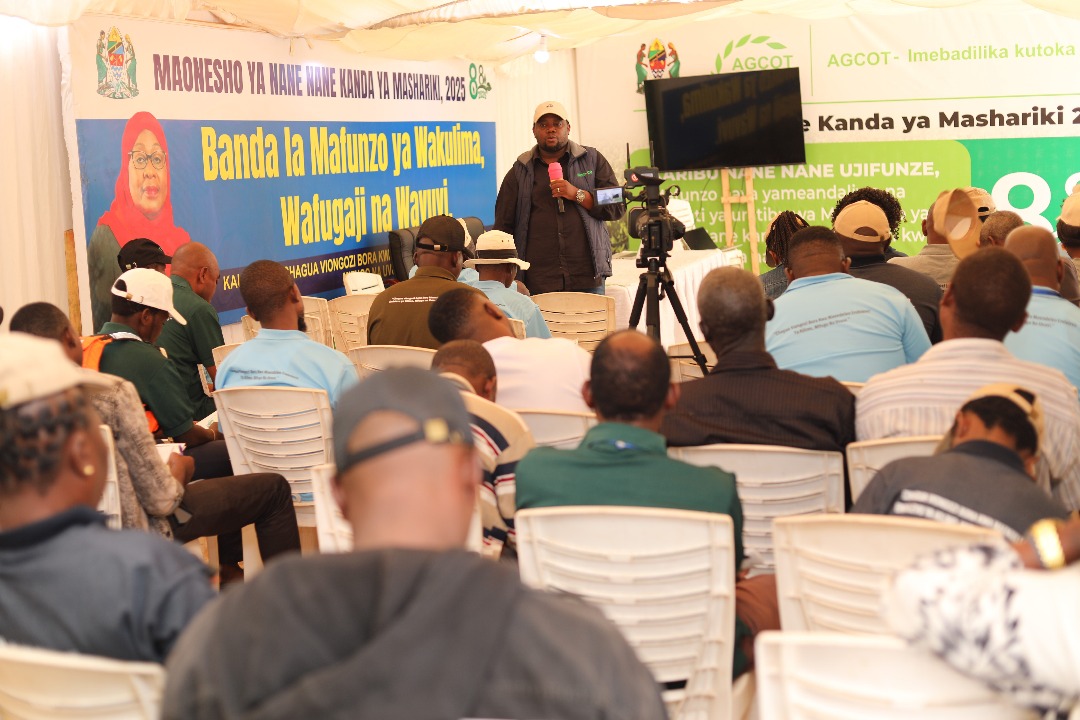AGCOT-Led Sessions Highlight Climate-Smart Practices and Rural Energy Solutions
Morogoro, Tanzania | August 4, 2025 — A Special Training Booth established at the Eastern Zone edition of Tanzania’s annual Nane Nane Agricultural Exhibition is drawing enthusiastic participation from farmers, livestock keepers, and fishers. Organised by the Nane Nane Exhibition Eastern Zone Organising Committee, the initiative is being led by the Agricultural Growth Corridors of Tanzania (AGCOT), a key national platform accelerating agricultural transformation.
Strategically located near the main stage in Morogoro, the open-air classroom offers daily hands-on training sessions that address some of the most pressing challenges in Tanzanian agriculture. AGCOT’s sessions focus on:
- Modern and effective farming practices
- Environmentally friendly technologies
- Clean and sustainable rural energy solutions
On just the second day of the exhibition, 70 participants attended in person, while an additional 102 stakeholders joined virtually via livestream—underscoring both the physical and digital reach of the initiative.
Following the classroom sessions, trainees were guided through demonstration farms established in partnership with local governments, agricultural officers, and private sector actors such as YARA and SEEDCo. These field visits showcased the tangible benefits of using high-quality seeds and scientifically recommended fertilizers—practices proven to enhance productivity and income security.
“This Special Training Booth is not just a place to learn—it is a launchpad for practical, climate-smart, and scalable agricultural solutions,” said a representative from AGCOT.
The booth will continue to operate through the remainder of Nane Nane Week (August 1–8, 2025), reinforcing Tanzania’s broader national goals under Vision 2050 and the Agriculture Master Plan (AMP 2050), including the adoption of innovative farming models across its rapidly expanding agricultural corridors.
